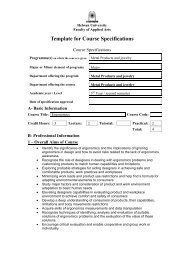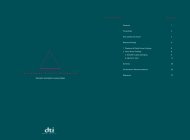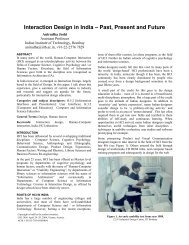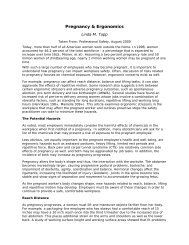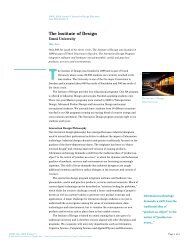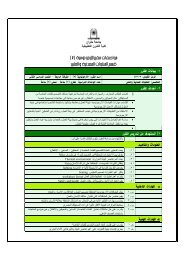Space Requirements for Wheeled Mobility - University at Buffalo ...
Space Requirements for Wheeled Mobility - University at Buffalo ...
Space Requirements for Wheeled Mobility - University at Buffalo ...
- No tags were found...
You also want an ePaper? Increase the reach of your titles
YUMPU automatically turns print PDFs into web optimized ePapers that Google loves.
• Potential benefits include the possibility of making ergonomic evalu<strong>at</strong>ions ofthe person-environmental fit using virtual techniques during the designprocess. This can improve communic<strong>at</strong>ion between designers, consumers andpolicy makers.• The HADRIAN software package currently includes link lengths, range ofmotion, posture prediction algorithms and functional task in<strong>for</strong>m<strong>at</strong>ion of 40individuals without disabilities, 40 ambulant individuals with a disability, and 20users of wheeled mobility devices.• Based on the structural and functional anthropometric d<strong>at</strong>a, designers can testvirtual tasks in virtual environments to determine the percentage of individualswho have the ability to complete a task in the specific context of theenvironment and also people with specific characteristics, e.g. an older frailperson with left side paralysis due to stroke. Reasons why a design cannot beused by a user group or individual become clearly obvious in the virtual tasksimul<strong>at</strong>ions.• Perhaps the largest limit<strong>at</strong>ion of the approach is the limited amount of d<strong>at</strong>a th<strong>at</strong>is currently available <strong>for</strong> testing. Additional individuals and tasks are needed<strong>for</strong> the design tool to provide a more accur<strong>at</strong>e understanding of how a designwill affect usability. The software is designed to accept new activities and newpeople with little difficulty.Mannequin Pro Human Modeling Design Tool, Dan HeltAbstractThis present<strong>at</strong>ion provided an overview of the Mannequin Pro ergonomic designtool. Early versions of a digital wheeled mobility user model were described. Thesoftware allows the user to examine the fit between a fairly simple st<strong>at</strong>ic virtualmodel of a user and the environment to be evalu<strong>at</strong>ed. The current version of thesoftware also allows simple three-dimensional biomechanical analysis.Key Points• Currently the Mannequin Pro software assumes th<strong>at</strong> the structural dimensionsof an ambulant adult are similar to the wheeled mobility user. Negoti<strong>at</strong>ions areunderway with the Center <strong>for</strong> Inclusive Design and Environmental Access toobtain structural d<strong>at</strong>a of wheeled mobility users th<strong>at</strong> would introduce moreaccur<strong>at</strong>e digital "Mannequin" models of this user group.General Discussion of Human Modeling Applic<strong>at</strong>ions toDetermine <strong>Space</strong> <strong>Requirements</strong> <strong>for</strong> <strong>Wheeled</strong> <strong>Mobility</strong>While digital human models provide in<strong>for</strong>m<strong>at</strong>ion th<strong>at</strong> cannot be collected withconventional anthropometric methods, it is not clear to the standards developers ifuse of such tools will be of gre<strong>at</strong> value. Typically, the questions th<strong>at</strong> designers<strong>Space</strong> <strong>Requirements</strong> <strong>for</strong> <strong>Wheeled</strong> <strong>Mobility</strong> 32



